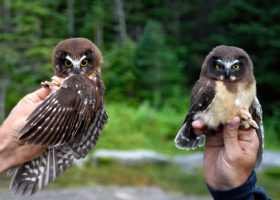
Mansfield Update: Owls, Cones and Crossbills
VCE’s capture of two juvenile Northern Saw-whet Owls was the undisputed highlight of our week 7 banding session on Mt. Mansfield. This species’ occurrence in montane forests reflects a complex and fascinating ecological phenomenon related to cyclical production of balsam fir cones.
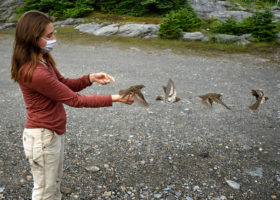
Mansfield Update: Returning Sharpies and Thrushes
With only three weeks before VCE’s 2020 banding season on Mt. Mansfield wraps up, free-flying juveniles, molting adults and wandering post-breeders were highlights, along with a 4+ year-old returning Sharp-shinned Hawk.
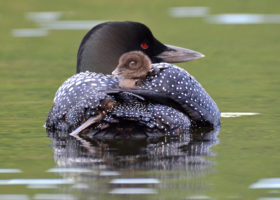
Mid-July Loon Update
It’s mid-July, height of “loon season,” and just a few days away from Vermont’s 38th annual LoonWatch Day on Saturday, July 18. VCE’s loon biologist, Eric Hanson, gives us an update from Vermont’s lakes and ponds (with photos you won’t want to miss).
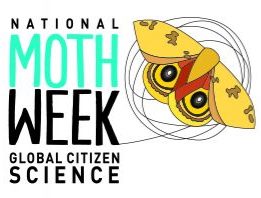
Join the Vermont Moth Blitz During National Moth Week July 18-26
National Moth Week offers everyone, everywhere a unique opportunity to become a citizen scientist and contribute information about moths. You can help map moth species distribution. Just find a moth, snap a photo, and add it to the Vermont Moth Blitz project on iNaturalist!
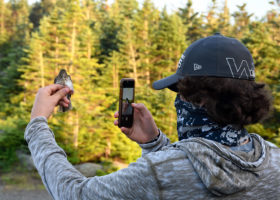
The Masked Banders of Mansfield
VCE’s 29th year of banding birds on the Mt. Mansfield ridgeline now finds staff and visitors sporting masks, a concession to safety in the COVID era. Our enthusiasm remains undiminished.
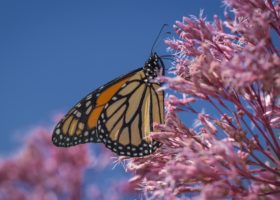
Field Guide to July 2020
As the dawn bird chorus now fades from northern forests, summer erupts in the sparkle and drama of insects. Here’s a short guide to July’s natural history.
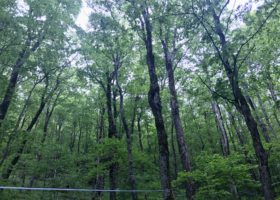
In the Field with VCE’s Bird-friendly Maple Efficacy Study
Here’s an update from the field (with amazing photos) from Sam Blair, a UVM senior and seasonal field biologist working with Steve Faccio on VCE’s Bird-friendly Maple Efficacy Study.

June 2020 Photo-observation of the Month
Congratulation to Charlotte Bill for winning the June 2020 Photo-observation of the Month. Charlotte discovered the cocoon on April 28 and was fortunate enough to see the Cecropia Moth emerged on June 5th.
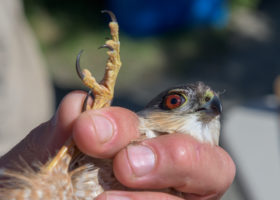
Sharpies, PUFI and Blackpolls: Week 3 on Mt. Mansfield
VCE’s third weekly banding session of 2020 on Mt. Mansfield featured a Sharp-shinned Hawk, a ‘PUFIgeddon’ of Purple Finches, several non-locally breeding warblers, and a resurgence in Blackpoll Warbler numbers. And, transport via ATVs appears to have been relegated to a memory.
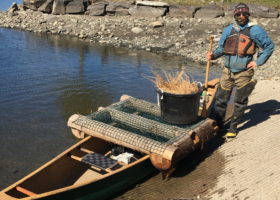
Vermont Loon Conservation Project Off to A Successful Start
16 territories visited, 30 loons observed, eight nests confirmed – all in one day. It helps to know where the loon nests are located when visiting so many ponds. I even spotted two birds sitting on nests from my truck window.

VCE’s Commitment to Racial Justice
We at the Vermont Center for Ecostudies value diversity, equity, and inclusion; we are committed to action and creating change, both within our organization and our broader sphere of influence.
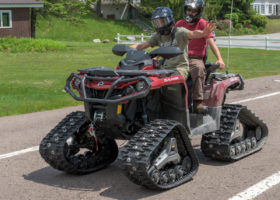
VCE’s 29th Season on Mansfield off to an Unusual Start
ATVs, sleeping in a parking lot at 3900-ft elevation under the full moon, and Yellow-bellied Flycatchers. These and more highlighted an unusual start to VCE’s 29th consecutive field season of studying birds on Mt. Mansfield’s ridgeline.
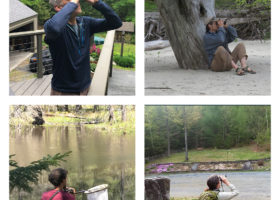
VCE Staff “Bird in Place” for Backyard Bird Quest 2020
VCE’s annual Birdathon took on a new form this spring, as the Green Mountain Goatsuckers “birded in place” for Backyard Bird Quest 2020. Sallying forth individually from our home bases—some even outside Vermont—we collectively found 134 species during the day, raising crucial funds for VCE’s wildlife conservation work.

Vermont Lady Beetle Atlas Finds Lost Species
On May 15th the weekend long Vermont Backyard Lady Beetle Blitz had just kicked off. VCE biologist Spencer Hardy was…
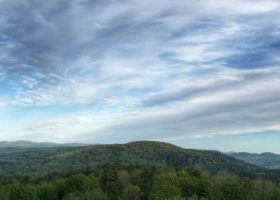
Field Guide to June
Here in Vermont, we dream of June during the darkest winter days. Its days last forever. Here’s just a few of the natural history wonders for the month.
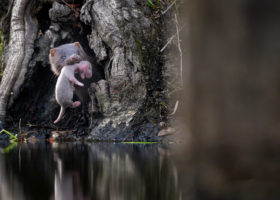
May 2020 Photo-observation of the Month
Congratulation to Kyle Tansley for winning the May 2020 Photo-observation of the Month. He captured this American Mink moving her kits from one den to another.
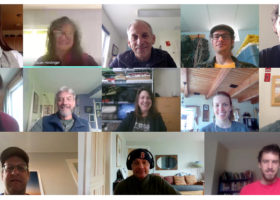
VCE Spirits Remain High: COVID Update for May
VCE staff may not be physically together, but our spirits remain high as we continue working hard on behalf of wildlife and eagerly anticipate our approaching field season.
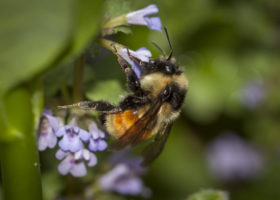
Field Guide to May 2020
The month of May is a show-off. Grass glows green under blue skies. Woodland wildflowers break out of the ground and demand attention. Trees flower and leaves burst from long-dormant buds. Songbirds arrive on southern night winds and liven the dawn with a chorus of song. May shouts of life and rejuvenation. Here’s a few bits of natural history for your May days.
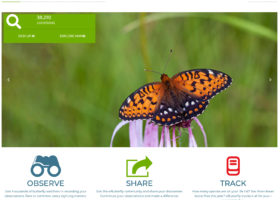
From Panama to the Arctic, a New eButterfly Takes Flight
An international team of biologists and software engineers, including VCE’s Vermont Atlas of Life, has collaborated on an ambitious expansion of the eButterfly platform, offering scientists and naturalists powerful new tools to track and help conserve butterflies from Central America to the far reaches of the Arctic.
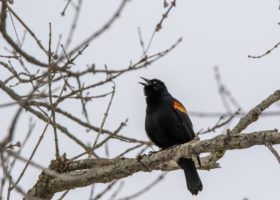
Outdoor Radio: Red-winged Blackbirds Signal the Arrival of Spring
In this episode of Outdoor Radio, on a cold spring day as they listen to songs and calls of male Red-winged Blackbirds setting up and guarding their breeding territories. Learn about their interesting mating system and other natural history and then get out and watch them near you.

April 2020 Photo-observation of the Month: American Woodcock
Congratulations to Roy Pilcher for winning the April 2020 Vermont Atlas of Life iNaturalist photo-observation of the month.

Join the Vermont Spring Backyard BioBlitz on iNaturalist
Discover the natural world right at home! Though we may be physically distanced this season, we’re still a united community of curious nature lovers and naturalists. From April 20th through May 20th, we invite you to join the Vermont Spring Backyard BioBlitz!
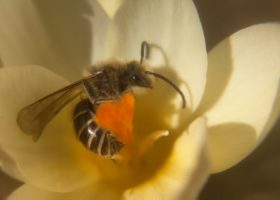
Discover the Bees in Your Backyard this Spring
Spencer Hardy, VCE’s Vermont Wild Bee Survey Project Coordinator, shares a video from the field, and how you can get involved in the Vermont Wild Bee Survey.
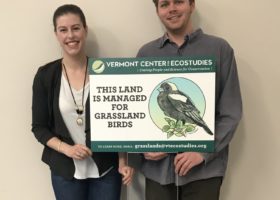
Ready and Waiting for Grassland Birds
VCE’s Grassland Bird Outreach team is ready and waiting for the return of grassland birds this spring.
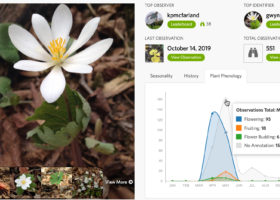
Join Our Spring Wildflower Phenology Annotation Blitz!
Long-term flowering records initiated by Henry David Thoreau in 1852 have been used in Massachusetts to monitor phenological changes. You can be like Thoreau right from home! There are thousands of images of plants that observers like you have added to the Vermont Atlas of Life on iNaturalist. But, they have not been annotated so that we can easily track phenology.
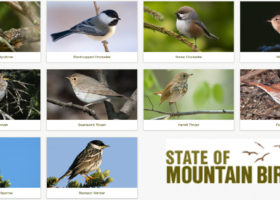
Updated for 2020: State of the Mountain Birds Report
The 2020 State of the Mountains Bird Report has landed… on the web. With this evolving report, we try to answer one seemingly simple question: What is the state of the mountain birds of the northeastern United States? Read on to find out.
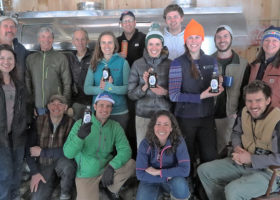
Checking in: April Update on VCE’s COVID-19 Response
VCE’s Executive Director Chris Rimmer checks in with a COVID-19 operational update.
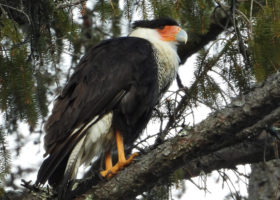
March 2020 Photo-observation of the Month
Congratulations to coleen61 for winning the March 2020 Vermont Atlas of Life iNaturalist photo-observation of the month. The image of the rare Crested Caracara that made an appearance this month in Woodstock, Vermont won the adoration of naturalists this month.
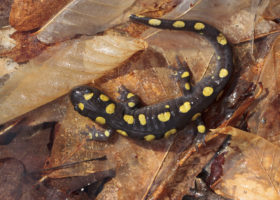
Field Guide to April
In April, the northern forest is laid bare with cold desire and our long dormant senses awaken. Here’s our guide to some of the joys of April.
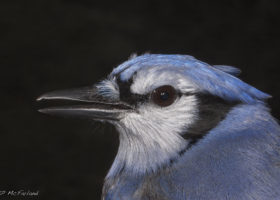
Outdoor Radio: Hoarding Blue Jays
In this episode of Outdoor Radio, we begin on a carriage road in middle of the Marsh-Billings-Rockefeller National Historical Park looking and listening for Blue Jays in stand of Red Oak trees. Join us for the hunt and learn about Blue Jay behavior.
